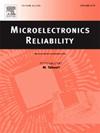Significance of phase formation in multicomponent lead-free solder alloys
IF 1.9
4区 工程技术
Q3 ENGINEERING, ELECTRICAL & ELECTRONIC
引用次数: 0
Abstract
This research focuses on the significance of alloying elements and phase formation in the microstructure, mechanical properties, wettability and interfacial behaviour of multicomponent lead-free solder alloys to address important parameters for achieving high-performance solder joints in electronic packages. For this purpose, five lead-free solder alloys including Sn-0.7Cu, Sn-1.0Ag-0.5Cu, Sn-3.0Ag-0.5Cu, Sn-3.0Ag-0.5Cu-0.8Bi and Sn-4.0Ag-0.5Cu-4.1In (all in wt%) were fabricated and studied in this investigation. Experiments and thermodynamic calculations confirm the formation of different phases including Cu6Sn5 in binary Sn![]() Cu, Cu6Sn5 and Ag3Sn in ternary Sn-Ag-Cu and, Cu6(Sn,In)5 and Ag3(Sn,In) in quaternary Sn-Ag-Cu-In solder alloys. Nevertheless, the β-Sn matrix can dissolve a small amount of Bi, which effectively produces finer eutectic phases of β-Sn and Cu6Sn5 during solidification in the quaternary Sn-Ag-Cu-Bi solder alloy. In fact, there is a favorable bonding tendency between Sn
Cu, Cu6Sn5 and Ag3Sn in ternary Sn-Ag-Cu and, Cu6(Sn,In)5 and Ag3(Sn,In) in quaternary Sn-Ag-Cu-In solder alloys. Nevertheless, the β-Sn matrix can dissolve a small amount of Bi, which effectively produces finer eutectic phases of β-Sn and Cu6Sn5 during solidification in the quaternary Sn-Ag-Cu-Bi solder alloy. In fact, there is a favorable bonding tendency between Sn![]() Ag, Sn
Ag, Sn![]() Cu and Sn
Cu and Sn![]() In, which promotes the formation of intermetallic compounds. In addition, the significant difference between the atomic radius of Sn elements with Cu and In (>10 %) promotes the formation of secondary phases. The slightly positive mixing enthalpy of Sn and Bi, together with their similarity in atomic size, allows for slight solubility of Bi in Sn. The addition of 0.8 wt% Bi and 4.1 wt% In reduced the melting points and solidification range of the lead-free solder alloy and led to improved wettability. The quaternary solder alloys exhibit superior thermal and mechanical properties compared to conventional alloys, making them potential replacements for lead-containing solder alloys.
In, which promotes the formation of intermetallic compounds. In addition, the significant difference between the atomic radius of Sn elements with Cu and In (>10 %) promotes the formation of secondary phases. The slightly positive mixing enthalpy of Sn and Bi, together with their similarity in atomic size, allows for slight solubility of Bi in Sn. The addition of 0.8 wt% Bi and 4.1 wt% In reduced the melting points and solidification range of the lead-free solder alloy and led to improved wettability. The quaternary solder alloys exhibit superior thermal and mechanical properties compared to conventional alloys, making them potential replacements for lead-containing solder alloys.
多组分无铅钎料合金相形成的意义
本研究的重点是合金元素和相形成在多组分无铅钎料合金的微观结构、力学性能、润湿性和界面行为中的重要性,以解决实现高性能电子封装焊点的重要参数。为此,制备了Sn-0.7Cu、Sn-1.0Ag-0.5Cu、Sn-3.0Ag-0.5Cu、Sn-3.0Ag-0.5Cu-0.8 bi和Sn-4.0Ag-0.5Cu-4.1In五种无铅钎料合金(均以wt%计),并对其进行了研究。实验和热力学计算证实,二元SnCu合金中形成Cu6Sn5相,三元Sn- ag - cu合金中形成Cu6Sn5相和Ag3Sn相,四元Sn- ag - cu - in钎料合金中形成Cu6(Sn, in)5相和Ag3(Sn, in)相。然而,β-Sn基体能溶解少量的Bi,在第四系Sn-Ag-Cu-Bi钎料合金凝固过程中有效地形成了β-Sn和Cu6Sn5的共晶相。事实上,SnAg、SnCu和SnIn之间存在良好的成键倾向,促进了金属间化合物的形成。此外,Sn元素与Cu和In元素原子半径的显著差异(> 10%)促进了二次相的形成。Sn和Bi的混合焓略为正,再加上它们在原子大小上的相似性,使得Bi在Sn中有轻微的溶解度。添加0.8 wt% Bi和4.1 wt% In降低了无铅钎料合金的熔点和凝固范围,改善了钎料合金的润湿性。与传统合金相比,第四系钎料合金表现出优越的热性能和机械性能,使其成为含铅钎料合金的潜在替代品。
本文章由计算机程序翻译,如有差异,请以英文原文为准。
求助全文
约1分钟内获得全文
求助全文
来源期刊

Microelectronics Reliability
工程技术-工程:电子与电气
CiteScore
3.30
自引率
12.50%
发文量
342
审稿时长
68 days
期刊介绍:
Microelectronics Reliability, is dedicated to disseminating the latest research results and related information on the reliability of microelectronic devices, circuits and systems, from materials, process and manufacturing, to design, testing and operation. The coverage of the journal includes the following topics: measurement, understanding and analysis; evaluation and prediction; modelling and simulation; methodologies and mitigation. Papers which combine reliability with other important areas of microelectronics engineering, such as design, fabrication, integration, testing, and field operation will also be welcome, and practical papers reporting case studies in the field and specific application domains are particularly encouraged.
Most accepted papers will be published as Research Papers, describing significant advances and completed work. Papers reviewing important developing topics of general interest may be accepted for publication as Review Papers. Urgent communications of a more preliminary nature and short reports on completed practical work of current interest may be considered for publication as Research Notes. All contributions are subject to peer review by leading experts in the field.
 求助内容:
求助内容: 应助结果提醒方式:
应助结果提醒方式:


